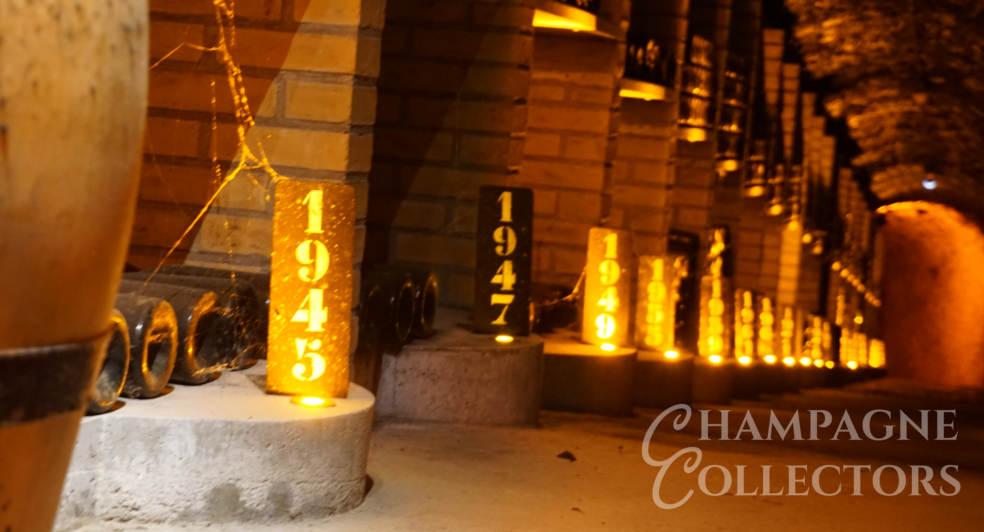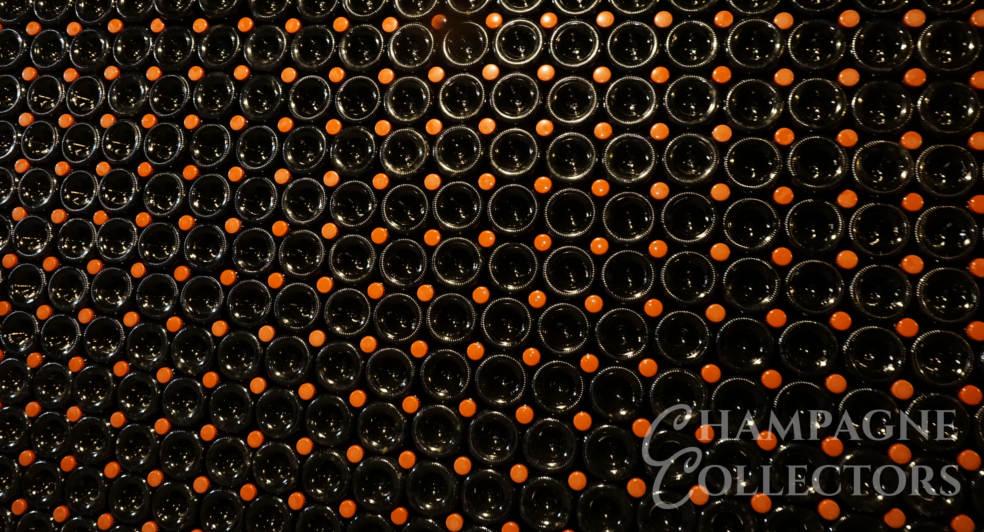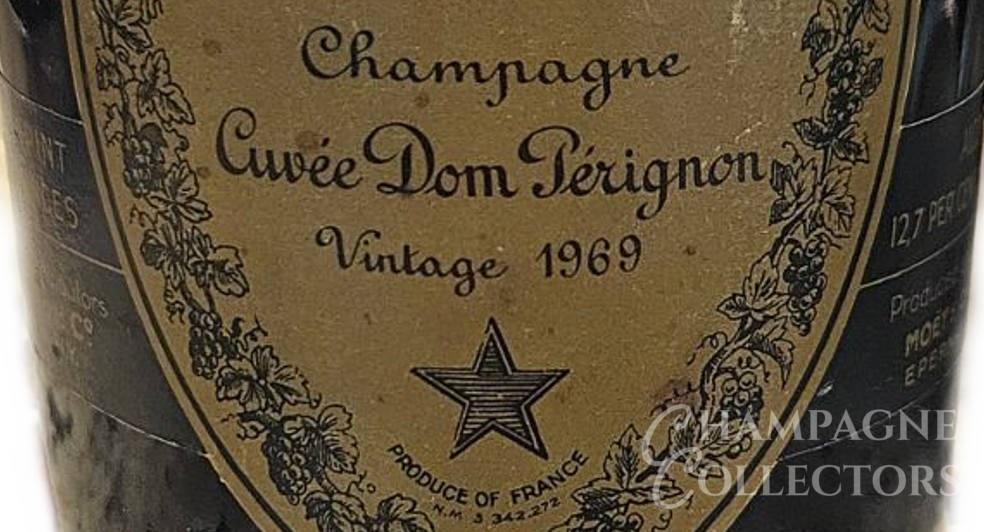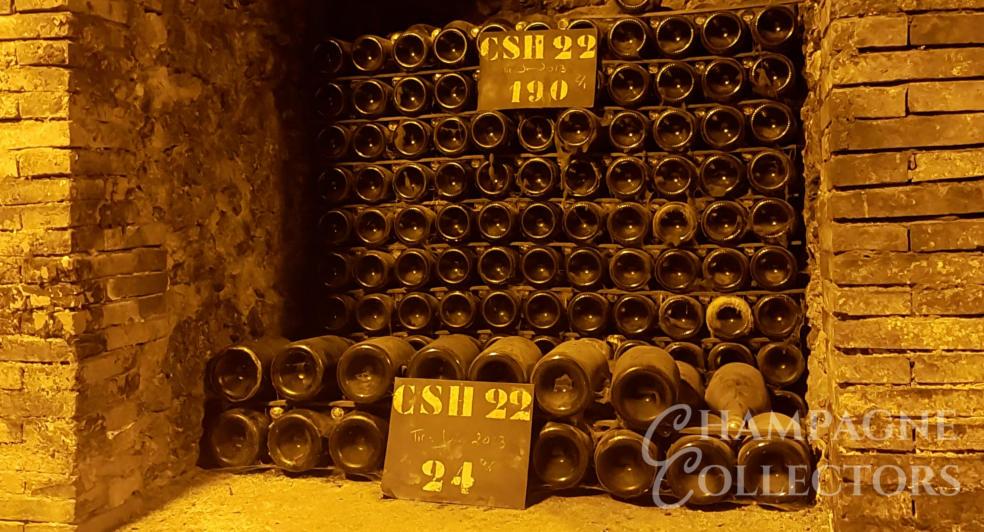When it comes to dating your bottle of Champagne, it will either be a vintage (a year stated) or it will be a non-vintage (no year stated). You can also find multi-vintage blends which contains wines from different vintage years.
- Vintage
- Non-Vintage (NV)
- Multi-Vintage (MV)
Vintage Champagne: Only a very small portion of Champagnes produced each year will be a vintage and it might not be every year that a vintage will be released. Vintages are usually only released when there have been perfect grape growing conditions, usually around 3 to four times each decade.
How do I know if my Champagne is vintage? Any vintage Champagne will have the year clearly stated on the bottle and in most occasions this will be on the front label, neck area or possibly on the back label. For very old Champagne bottles there might not be a year stated and further research will be required to discover if the bottle in question was a vintage release.
Non-vintage: The most commonly produced Champagne is non-vintage and will generally be cheaper and recommended to be drunk young (usually up to three years from release). If you have a bottle you wish to identify, you will likely see NV stated on the bottle and you will certainly not see any vintage year stated (do not get confused if you see an old date on a bottle which is the formation year of the winery!).
Such bottles we get offered frequently, and have to turn down for they have little value, will be Moet & Chandon 'Imperial' and Vueve Clicquot 'Yellow label Brut'. Do not be down hearted at this point, it might still be worth chilling that bottle and popping it open later to drown any sorrows.
There are some non-vintage Champagnes that will hold some value with names such as Armand de Brignac (those shining gold / white / rosé bottles) being one to note. There are also special releases (prestige cuvées) that will hold value which some wineries produce that can have a limited availability.
Multi-vintage: This is the description put to a Champagne label that has been made up with a series of vintage years in order to create it. Usually this will be stated on the bottle and in some detail as it is more recently become a popular option for Champagne producers. A well known example of an MV label is the Grande Cuvée from Krug.
Which years did they produce a vintage Champagne?
On most occasions, Champagne producers will all agree on a year being a vintage one. There is no rule set to say what might be a vintage year or not. Micro climates exist in the Champagne region where you can see one region have a better weather pattern over another or certain variety of grape performing better over others so some will release a vintage whereas others will not be able to. Even the biggest Champagne houses have raised eyebrows over the years by releasing a vintage when most agreed that it was not merited.
If we look at vintage years since 1900 we will see no pattern and research will be required to study the growing season weather records so to understand reasoning for declaring a vintage. There no official / overall agreeing chart of vintage Champagne years and this subject is usually referenced by quality of vintage for any year can be declared a vintage by any producer. Not forgetting that they were not unanimous decisions, and taking what have been referenced by many as 3 star to five star quality, let's take a look at which years were vintage years in Champagne:
1900
1901
1904
1905
1906
1911
1913
1914
1915
1919
1920
1921
1926
1928
1929
1933
1934
1937
1938
1939
1942
1943
1945
1947
1949
1952
1953
1955
1959
1961
1962
1964
1966
1969
1970
1973
1975
1976
1979
1981
1982
1983
1985
1988
1989
1990
1995
1996
1998
2000
2002
2004
2005
2006
2007
2008
2009
2012
2013
2014
2015
2019
*in bold are the



